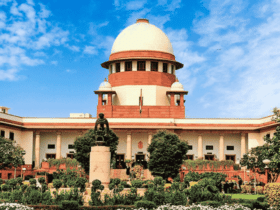A clogged drain may be a bothersome and uncomfortable issue that interferes with everyday life. If left ignored, it not only impairs the efficiency of our plumbing system but may also cause water damage, terrible odours, and even health dangers. However, by learning to recognise the early warning signs of a clogged drain, you may proactively resolve the problem before it becomes a significant hassle. This blog will examine eight practical techniques to spot these warning signals and avoid drain clogs.
1. Slow Draining
Slow drainage is one of the first and most visible indications of a potential blocked drain. Water draining slower than usual from sinks, bathtubs, or showers is a clear indicator of a building obstruction. It is critical to monitor the rate at which the water drains and compare it to the regular flow.
If you detect a substantial delay or decrease in drainage speed, it is critical to examine further. Taking immediate action to identify and repair the underlying cause can save the blockage from increasing and causing more severe plumbing problems.
2. Unpleasant Odour
Unpleasant odours coming from your drains are another indicator of potential obstruction. The foul odours are caused by the accumulation of debris and organic waste in the pipes, which leads to bacterial development. Suppose you notice persistent or progressively foul odours, particularly from many drains in your house. In that case, it may indicate a clog in the main sewage line or a more serious plumbing problem that requires immediate attention.
Ignoring these smells might result in more serious problems, including sewage backups or leaks, which emphasises the urgency of finding a quick solution to maintain a clean and hygienic living environment. By hiring plumbers in Melbourne, you can take care of this problem with zero hassle.
3. Gurgling Sounds
When a partially blocked drain obstructs the smooth flow of water, distinct gurgling sounds are usually produced. You will hear these aural indications when you use the washing machine, dryer or sink. Gurgling noises indicate that the drainage system is having interruptions and is not functioning correctly. It is critical to recognise these noises since they indicate underlying drainage system difficulties that must get addressed immediately to avoid further troubles or complete blockages.
4. Water Backing Up
Water backing up in sinks, bathtubs, or toilets is an unmistakable indicator of a blocked drain. Instead of flowing smoothly, the water rises, suggesting a downstream barrier. This condition usually occurs in a single fixture with a localised obstruction. If many institutions are affected by the water backlog, it indicates a more severe problem in the main sewage line. In such circumstances, fast action is required to clear the obstruction and avoid sewage backups or water damage to your home.
5. Overflowing Gully or Drain Covers
Examine the exterior drain covers, such as gullies or grates, around your house attentively. You have a clogged drain if you notice symptoms of spilling water or pooling in these spots. Leaves, debris, or intruding tree roots can block outdoor drains, restricting water flow.
By inspecting these drain covers regularly, you can quickly spot any faults and take proactive actions to avoid any blockages from developing more severe problems in your drainage system.
6. Recurring Clogs
If you consistently experience obstructions in a particular drain that requires repeated unclogging, this should raise a red signal about an underlying issue. Recurring obstacles suggest that an impediment has yet to get removed entirely. Ignoring this repeated problem may result in a more severe obstruction in the future, causing substantial annoyance and possibly damaging your plumbing system. By hiring a professional plumber in Geelong, it is essential to tackle the underlying cause of the recurring clogs to preserve proper drainage and stop the issue from worsening.
7. Fluctuating Water Levels in the Toilet
The water level in your toilet bowl should remain steady. If you see changes in the water level without flushing, this might indicate a clog deeper down the drainpipe. This fluctuation happens when the blocked drain obstruction obstructs the usual water flow, changing water levels. It is critical not to dismiss this occurrence since it indicates a potential impediment that may need prompt action to avoid a total blockage or hazardous overflow.
Addressing the problem as soon as possible will assist in preserving the correct operation of your toilet and prevent subsequent plumbing difficulties.
8. Strange Reactions in Multiple Fixtures
If you notice poor drainage, gurgling noises, or water backing up in many fixtures around your house, it might indicate a more significant drainage problem. If running the washbasin or flushing the toilet causes water to bubble up in the bathroom or bathtub, there may be a blockage in the main sewage line. Considering these reactions in various settings is essential since they suggest a larger underlying issue.
Your Local Plumbing: Your Best Local Plumbing Team
Recognising early warning signs of a clogged drain is critical for keeping a well-functioning plumbing system and preventing potential hassles later. Slow drainage, unpleasant odours, gurgling sounds, water backing up, overflowing drain covers, recurring clogs, fluctuating water levels in the toilet, and strange reactions in multiple fixtures can help you identify problems before they become significant blockages or plumbing emergencies. These warning indicators are helpful cues that drive us to act to avoid more damage or inconvenience.
Regular maintenance, regular inspections, and early resolution of minor concerns can save us from costly repairs and inconveniences in our everyday life. Remember that recognising early indicators of a clogged drain may go a long way towards protecting the integrity of your plumbing system and guaranteeing a smooth, hassle-free experience in your house.



















Leave a Reply